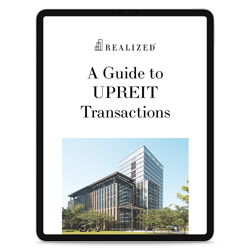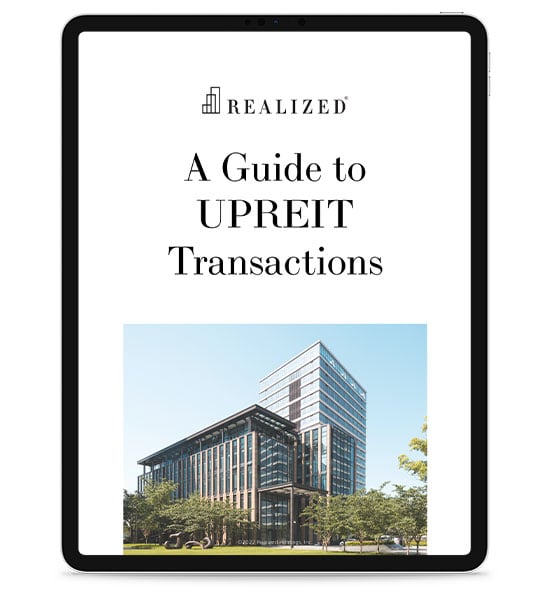
There are many different REIT structures, but we will cover four popular REIT types available to investors. Some you might not have heard of. The requirements to invest in these REITs span a wide range, meaning there’s something for everyone.
All the REITs listed here must distribute at least 90% of taxable income to investors as dividends. Except for private REITs, a majority of independent directors are required, and it is shareholders who re-elect the directors.
Stock Exchange-Listed REITs
Stock exchange-listed REITs (SELRs) are public REITs that trade on national exchanges such as the Nasdaq or NYSE. For this reason, they must register with the SEC as a permanent entity. These REITs trade on the exchanges like any other publicly listed stock.
The SEC, state corporation laws, and the exchanges regulate SELRs. Financial disclosures must be made regularly. These disclosures include unaudited quarterly reports (10-Q), audited annual reports (10-K), 8-Ks, and proxy statements in accordance with the Securities Exchange Act of 1934.
Similar to stocks, these REITs have plenty of liquidity. Investors can buy and sell their REITs at offered prices on the exchanges. There is also near-instant price discovery. This can make valuing a SELR simpler than that of a private REIT.
The value of a SELR is estimated by buy-side and sell-side analysts using market prices and NAV (net asset value). Comparable benchmarks include the FTSE Nareit Index family.
Unlike private REITs, commissions are fairly low and the same as what would be paid for trading stocks through a brokerage.
Officers and employees manage SELRs.
PNLR Overview
Not all public REITs are listed on exchanges. PNLRs are an example of public non-exchange listed REITs.
Because PNLRs are public, they must be registered with the SEC. Because of registration, these REITs must regularly disclose their financial results under the Securities Exchange Act of 1934. This is usually done through quarterly unaudited and annual audited reporting. Reports include 10-Qs (quarterly), 10-Ks (annually), 8-Ks, and proxy statements.
Regulatory bodies include the SEC and FINRA. Along with state corporation regulations and securities laws, and NASAA guidelines.
PNLRs are typically externally advised and managed by a registered investment advisor under the Investment Advisers Act of 1940.
Minimum investment amounts are usually in the $1,000 - $2,500 range. In some cases, investors may be required to be accredited.
A majority of independent directors are required. Shareholders re-elect these directors.
NAV PNLRs
Unlike stocks, which have instant price discovery, the price of NAV (net asset value) NPLRs is calculated and made available daily, weekly, or monthly, depending on the REIT. The NAV is composed of third-party appraisals and portfolio valuation.
While not as liquid as exchange-listed REITs, investors can sell their shares back to the REIT at the current NAV. Investors can’t sell their share on any given day. They usually must wait for the REIT’s monthly repurchase period. When investors sell their shares back to the REIT, they may not receive 100% of the NAV but instead a certain percentage of the declared NAV.
Commissions for investing in a PNLR are often lower than life cycle PNLRs. However, fees will be considerably higher than commissions on exchange-listed stock transactions at a brokerage. Fees vary by REIT.
NAV PNLRs are permanent entities. A registered investment advisor typically manages PNLRs per the Investment Advisers Act of 1940. External advisers may also be involved.
Life Cycle PNLRs
In contrast to NAV PNLRs, life cycle PNLRs have a limited duration. These REITs culminate in a liquidity event, which terminates the REIT’s life cycle. This is usually the only time investors can sell their shares back to the REIT.
Life cycle PNLRs provide NAVs but not as frequently as NAV PNLRs. NAV updates are provided annually but do not start until 18 months after the initial offering closes.
The goal of a life cycle PNLR is the liquidity event. This event can lead to the REIT being listed on a national securities exchange, selling all or nearly all of its assets, or entering into a merger.
In addition to commission-related fees, life cycle PNLRs may have performance fees.
Management often consists of external advisers.
Private REITs
Private REITs do not trade on exchanges and are not registered with the SEC. This is due to an SEC registration exemption under Regulation D of the Securities Act of 1933. These REITs fall under the private placements category, which includes hedge funds.
To invest in private REITs, investors usually must be accredited. There is generally no secondary market to sell shares. This creates illiquidity. When investors attempt to sell shares, institutions such as pension funds and other accredited investors are often the only buyers available.
Some REITs may offer redemption programs. But in many cases, investors can expect to take a loss on shares sold before the projected holding period ends. Prices of private REITs vary and depend on the specific REIT.
Fees are generally highest in this group of REITs. Fees can include formation costs, commissions, management, and performance fees.
Minimum investment requirements range from $1,000 to $25,000 and more. Holding periods can last several years. Investor control and appointed directors are subject to the terms of the offering.
This material is for general information and educational purposes only. Information is based on data gathered from what we believe are reliable sources. It is not guaranteed as to accuracy, does not purport to be complete and is not intended to be used as a primary basis for investment decisions. It should also not be construed as advice meeting the particular investment needs of any investor.
A REIT is a security that sells like a stock on the major exchanges and invests in real estate directly, either through properties or mortgages.
REITs receive special tax considerations and typically offer investors high yields, as well as a highly liquid method of investing in real estate.
There are risks associated with these types of investments and include but are not limited to the following:
- Typically, no secondary market exists for the security listed above.
- Potential difficulty discerning between routine interest payments and principal repayment.
- Redemption price of a REIT may be worth more or less than the original price paid.
- Value of the shares in the trust will fluctuate with the portfolio of underlying real estate.
- There is no guarantee you will receive any income.
- Involves risks such as refinancing in the real estate industry, interest rates, availability of mortgage funds, operating expenses, cost of insurance, lease terminations, potential economic and regulatory changes.
This is neither an offer to sell nor a solicitation or an offer to buy the securities described herein. The offering is made only by the Prospectus.



